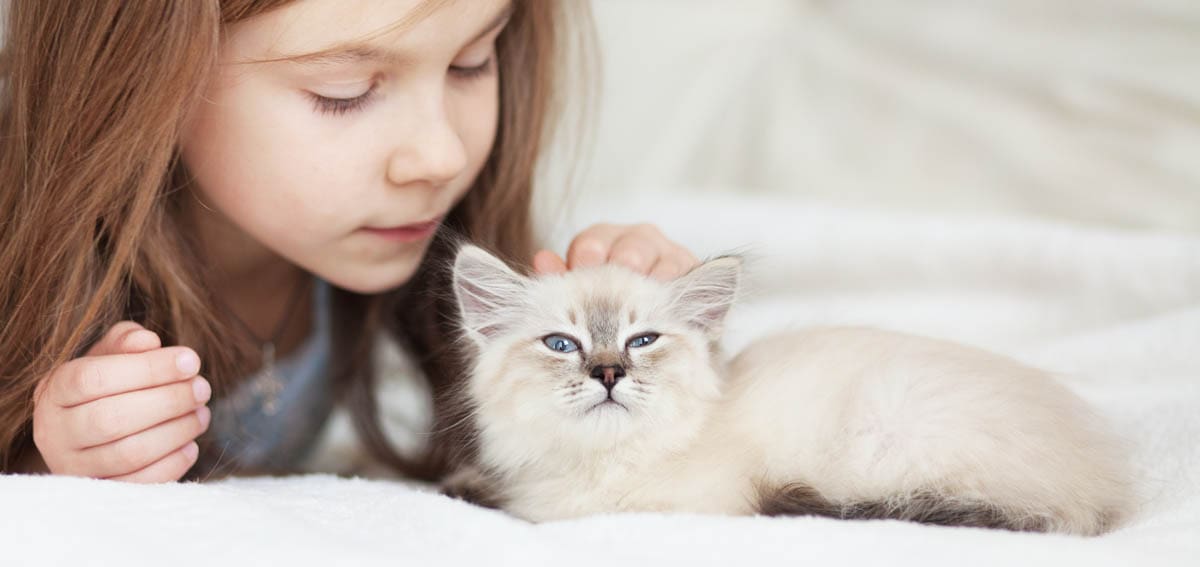Child-Friendly Cat BreedsAny cat can make an ideal family pet, but some breeds are more suitable than others. The cats featured in this article have a combination of a friendly and easygoing personality, playfulness, energy, and they get along with children and other pets. |
Burmese

- Coat: Shorthair
- Activity level: Moderate
- Cost: $800 – $1,200
About: The Labrador of the cat family, as one member described the Burmese and suits them perfectly. If I had to name one breed of cat above any other that is the perfect family pet, it would be the Burmese.
The Burmese is a playful breed of cat, but not overly energetic; they get along well with children and other pets. Burmese are relatively quiet, but some are known to talk. Burmese cats don’t play favourites; any lap will do.
Health: The Burmese are an overall healthy breed of cat, but there is a higher incidence of gum disease and diabetes. Kinked tails have no impact on health, but they are classed as a fault in the show ring. European Burmese have craniofacial defects in some lines, which breeders are working hard to eliminate. Burmese hypokalemia is a rare genetic disease in which excessive amounts of potassium are lost in the urine. Genetic tests are available for craniofacial defects and Burmese hypokalemia.
Devon Rex
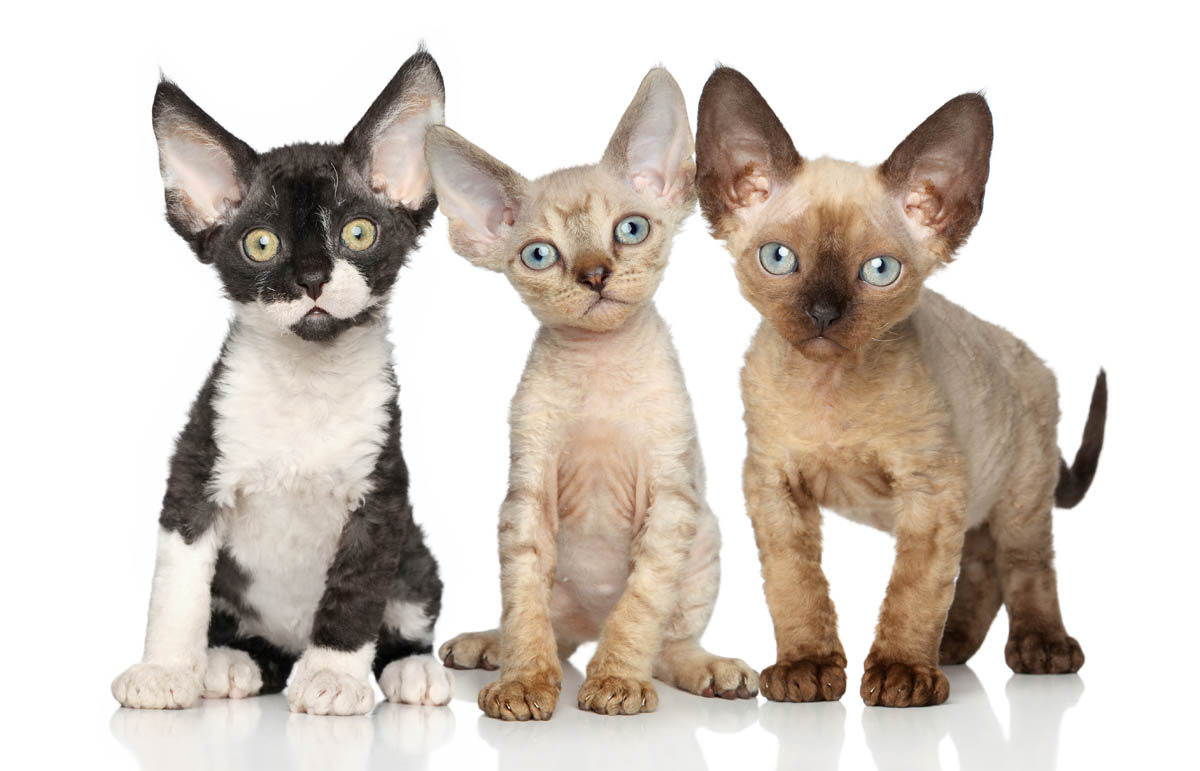
- Coat: Shorthair
- Activity level: Moderate
- Cost: $950 – $1,200
About: The Devon Rex is an active, intelligent, extremely friendly, in your face breed of cat. If you want a cat on the go, then the Devon Rex will suit you. That is not to say they don’t love a snuggle on your lap, though, I don’t know if my theory is correct, but they do seem to be heat-seeking cats, and I wonder if that is because of their thinner coats?
They love to be up high, and will often jump up on and ride on their human’s shoulders. They get along with children and other pets.
Health: Devon Rexes have a higher incidence of patellar luxation, spasticity, inherited myopathy, and polycystic kidney disease.
Ragdoll

- Coat: Longhair
- Activity level: Low to moderate
- Cost: $750 – $1200
About: The Ragdoll is a beautiful long-haired breed of cat that is known for its laid-back nature. It is said that they “flop like a rag doll” when they are picked up, hence the name. They are quiet, intelligent, calm, relaxed; they thrive on human companionship and are never far away from their human family.
Health: The Ragdoll has an increased incidence of hypertrophic cardiomyopathy and polycystic kidney disease; there occasionally.
Birman
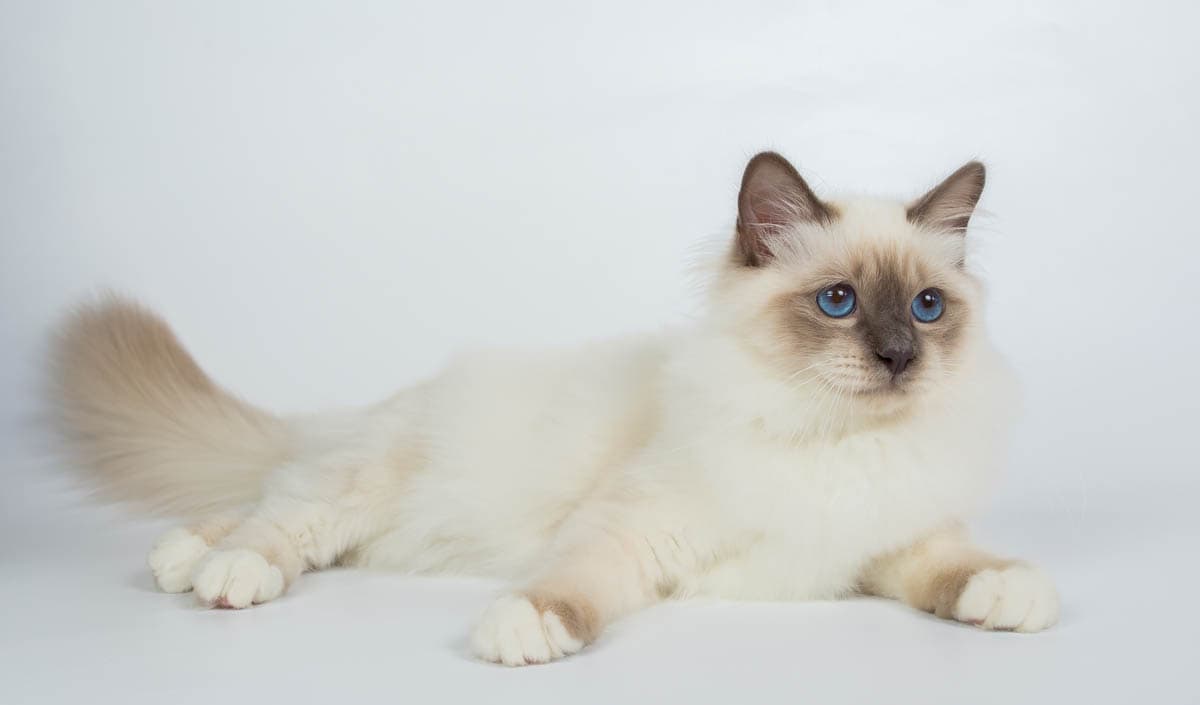
- Coat: Longhair
- Activity level: Moderate
- Cost: $750 – $1100
About: Another lovely longhaired breed is the Birman. A sweet-natured, loyal, intelligent, and loving cat. They remain playful well into adulthood. They can sometimes form a bond with one particular family member, but get along with everyone.
Health: There biggest risk factor in Birman cats is hypertrophic cardiomyopathy and mucopolysaccharidosis. Polycystic kidney disease is occasionally seen.
Tonkinese
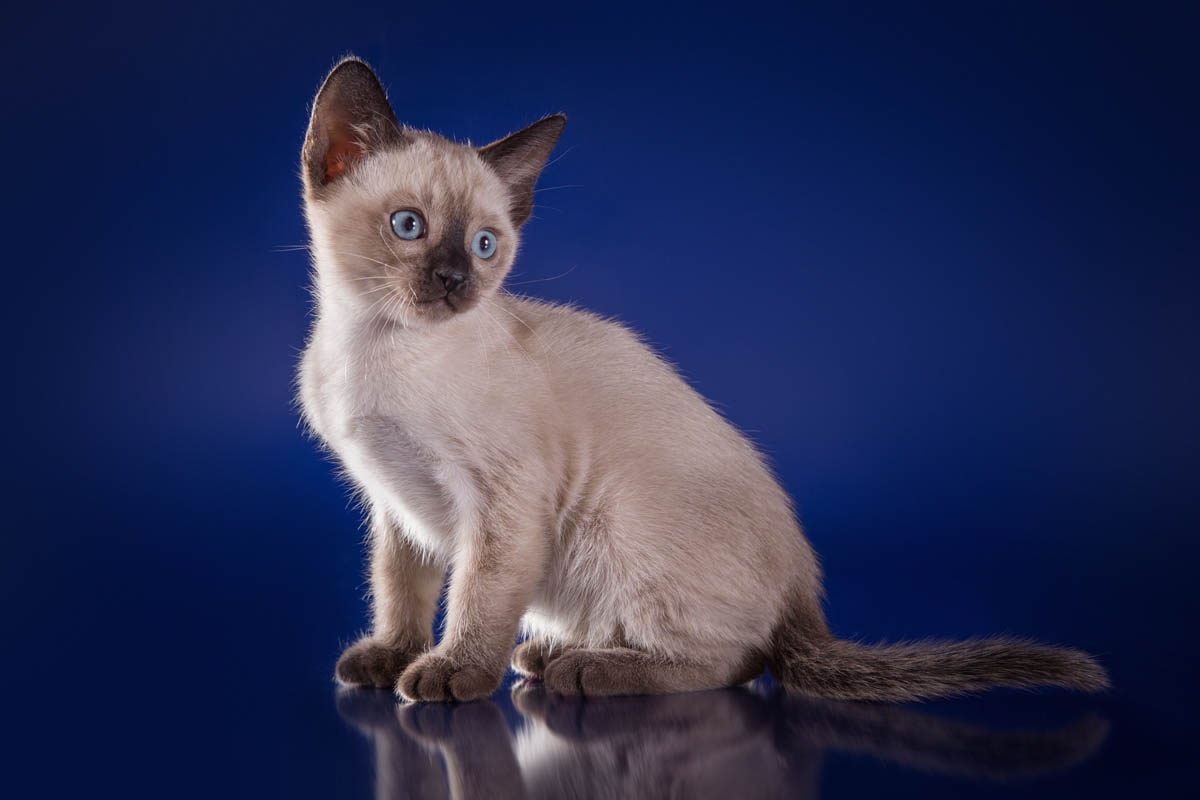
- Coat: Shorthair
- Activity level: Moderate to high
- Cost: $850 – $1400
About: The Tonkinese is a hybrid between the Burmese and the Siamese and, as such, has inherited the best of both breeds. They are laid back, extremely intelligent, active, playful, and get on well with all members of the family.
Health: Overall, the Tonkinese is one of the healthiest cat breeds, there is a higher incidence of progressive retinal atrophy, Burmese hypokalemia, and craniofacial defects in Tonkinese from European Burmese lines.
Singapura
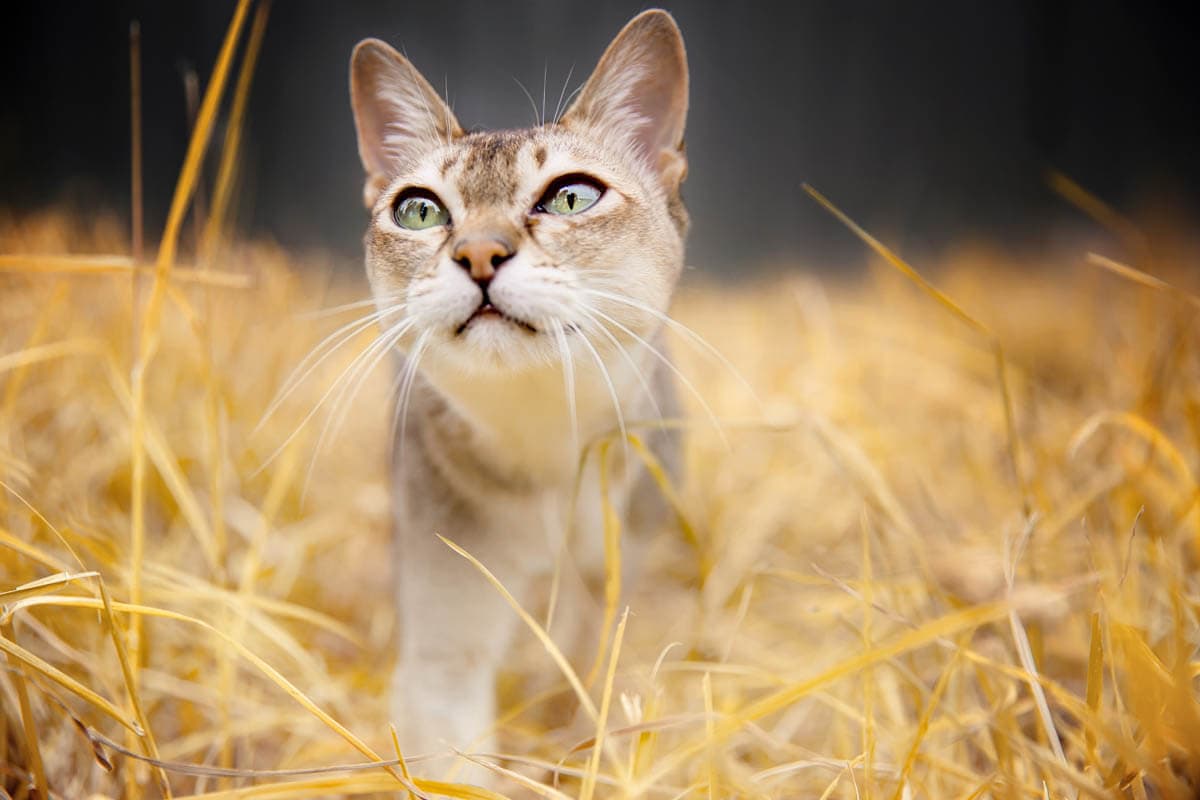
- Coat: Shorthair
- Activity level: Moderate to high
- Cost: $1,000 – $1,500
About: The smallest breed of domestic cat, the Singapura, is a wide-eyed, gentle cat who gets along well with children and other pets. They are quite energetic right up to middle-age when they slow down a little. They will talk to you but are not overly noisy, love to sit on your lap or play a game. We have a Singapura, and even people who are self-proclaimed cat haters have been won over by our Singapura boy.
Health: Singapura cats have an increased incidence of Burmese hypokalemia, progressive retinal atrophy, and pyruvate kinase deficiency.
Moggy/mixed-breed

- Coat: Short or long hair
- Activity level: Varies
- Cost: A mixed breed cat from a shelter will cost between $100 – $300
About: Moggies (domestic short or longhairs) come in all shapes and sizes. Some are family-friendly, some not so. The best place to obtain a domestic is from an animal shelter. The workers there will know the personality of the cats and kittens there and will be able to show you cats they think will suit your family’s needs.
Health: Due to their large gene pool, mixed-breed cats have a low incidence of inherited diseases.
Abyssinian/Somali
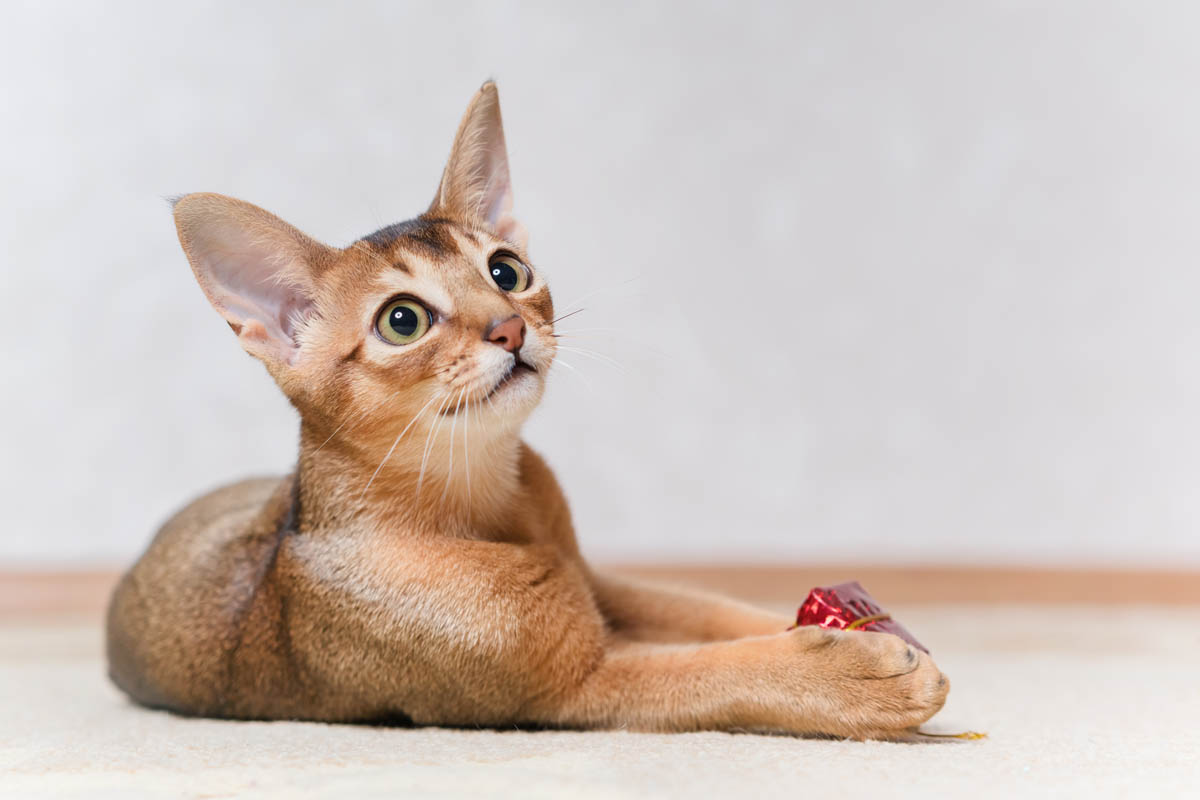
- Coat: Shorthair (Abyssinian), longhair (Somali)
- Activity: High
- Cost: $950 – $1300
About: Abyssinians and their long-haired cousins the Somali are extremely intelligent, active, playful, and curious cats. They love nothing more than being up high, riding on your shoulder. They make a great family pet for children and get along well with other animals.
Health: There is a higher incidence of progressive retinal atrophy and pyrukinase kinase deficiency in the Abyssinian cat.
Choosing a cat
We can make generalisations about the different breeds of cats, but ultimately, they all have their personalities.
When selecting a cat or kitten from a breeder, I like to find one who raises their cats indoors and around children, so they are already familiar with kids. I recommend an older kitten if your children are very young. While children mean well, the younger ones can sometimes be a little rough when handling kittens, so I would certainly recommend one who is around 16 weeks of age and a little less fragile.
Some breeds are at increased risk of inherited and acquired disease, although good breeders do everything possible to eliminate inherited diseases from their lines. Genetic tests are available for several diseases, always ask breeders about breed-specific health issues, and what tests they utilise with their cats.
Even though the breeds fit a general profile, they are individual, and when selecting a kitten, visit your breeder and ask to see the cats she has for sale. Some will be a little more outgoing than others. Sit and observe. See who comes up to you and who sits back. I have often said that I think cats choose their humans and not the other way around.
It is your choice to let your cat sleep with you and your children, but babies and young children (under the age of 4 or 5) should not sleep with a cat.
Young children should not be allowed to carry a cat around; if they want to hold their cat, it should be while seated.
What age can I bring a kitten home?
A kitten should stay with mum until he is at least 12 weeks of age. Yes, young kittens are adorable, but they learn manners and social skills from their mother and siblings, and if they are removed at too young an age, they can develop behavioural problems which can last a lifetime. So definitely wait until the 12-week mark, it is worth it to adopt a well-adjusted kitten.
